#civic cipher
Text
Tax the rich!
Be sure to follow us on all platforms!
Add Civic Cipher to your podcast favorites!
#civic cipher#fox news#cnn#global warming#climate activism#climate change#black lives matter#blm#defund the police#police brutality#police shooting#police chase#social security#congress#tax the rich#donald trump#trump#joe biden#Biden#ron desantis#conservative#conservatives#conservatism#liberals#liberal#liberalism#republican#republicans#republicanism#democrat
378 notes
·
View notes
Text
So You Want to Buy a Togepi: Estimated Minimum Import Costs for Pokémon

In this article, you’ll learn how the following relate to buying a Togepi:
• The price of a used 2001 Honda Civic in 2005
• The legality of buying Pokémon and legal loopholes
• Shipping cost per mile between Japan and Baja California
• How much it costs to import rice crackers from Japan into Manhattan
• Swedish tax rate income deductions
• How much an 11-year-old is paid to throw 2.6 pounds
• Recommended percentage of income for discretionary spending
• The average wage of a construction worker in the U.S. in 2005
• Unexpectedly athletic obese people
Introduction
But, somewhere along the line in this story, someone probably bought a Togepi.
And how much did that someone pay?
Caveats
The following will assume there are not dedicated breeding operations for Pokémon for export to Orre, and will not be considering monetary inflation in the Pokémon world. These are all rough calculations.
Some Trainers probably too young for a job have Togepi. These can be presumed to be gifts, or a suggestion that the labor cost of obtaining Togepi is lower than calculated. As it is impossible for the player to breed a Pokémon in Pokémon XD, it is unclear whether there are breeding operations in Orre.
Base Labor Cost
The price of chucking six Pyukumuku back into the ocean is 20,000 P2, or, logically, ~3,333 P per Pyukumuku. Notably, one also has to find them, not just chuck them, so there's a search cost involved.
Pyukumuku weighs 2.6 pounds. A baseball, which will be used as a proxy for a Poke Ball, weighs about 5 ounces. There are 41.6 ounces in 2.6 pounds, so it would be, very roughly, 8.32 times harder to throw a Pyukumuku into the ocean than to throw a Poke Ball the same distance. So the labor cost of finding a Pokémon and throwing a single Poke Ball is, at minimum, roughly 401 P (or 400.6 P not rounded up) which converts to $3.14. The material cost of a single Poke Ball is 200 P ($1.56), so the total minimum capture cost would be roughly 601 P, or $4.70.
But, if all one is doing is throwing, not battling, one would want a stronger Poke Ball: an Ultra Ball, for example. That's 1,200 P in Johto and Kanto (outside of Let's Go Pikachu and Let's Go Eevee), so the equivalent of $9.39.
Therefore, the minimum cost of obtaining a Togepi from the wild would be about 601 P ($4.70) if using one Poke Ball with a lucky shot, or to 1,601 P ($12.53) if using an Ultra Ball.
Cost Checking
With the exception of the Magikarp salesman, who’s a con artist, it is not generally legal to buy Pokémon directly. It is, however, possible to buy coins at Game Corners and use those coins to buy Pokémon. The coin conversation value is 50 coins per 1000 P, so 1 Coin is Worth 20 Pokédollars. Pokédollars are based on yen. Therefore, the coin cost of Pokémon sold indirectly through Game Corners can provide a rough proxy of the market prices.
Celadon Game Corner Prizes (as of Generation III Abra = 180 C (3,600 P/$28.18)
Clefairy = 500 C (10,000 P/$78.27)
Dratini = 2800 C (56,000 P, $438.31)
Scyther = 5500 C (110,000 P, $860.97)
Porygon = 9999 C (199,980 P, $1,565.24)
Note: they're all different levels, which makes it hard to figure out their prices if they were equivalent levels.
These prices make sense, as they correspond to the Pokémon being increasingly hard to find and catch.
Abra: Found in two routes; encounter rate of 15%; hard to catch because it uses Teleport, although multiple strategies can reduce this risk or eliminate it entirely. It's possible to combine Ultra Balls with other trapping strategies, so it's not that hard to catch if one's prepared.
Clefairy: Found only in Mt. Moon; low encounter rate of 1-6%. Unlike Abra, it doesn't require unusual techniques, though it is harder to find.
Dratini: Only in the Safari Zone, can't be legitimately obtained by battling; can't use Ultra Balls; low encounter rate (15%), high base flee rate (35%).
Scyther: Only in the Safari Zone, can't be legitimately obtained by battling; can't use Ultra Balls; low encounter rate (4%); high base flee rate (45%). limited number of steps allowed in the Safari Zone. Sweet Scent is a workaround against the step count, but they still have to go through quite a lot of non-target Pokémon first.
Porygon: an artificial species that doesn't exist in the wild and can only breed with Ditto. Its exclusivity likely explains its high price.
Market Cost of a Togepi
Eevee is a suitable proxy for a Togepi: throughout most of the games, it is only possible to get an Eevee as a gift or trade, making Eevee similar to Togepi in how it can be obtained. An Eevee, which is worth 6,666 C, is worth 133,320 Pokédollars. If Pokédollars are equivalent to yen, the yen value of an Eevee converts to 1,043.57 US dollars as of May 20, 2022.
If using the price of an Eevee as a proxy for a Togepi, a Togepi is worth 133,320 P, or 221.8 times the minimum cost of just catching it. This surely attests to its rarity and high demand.
Criminal Surcharge
It’s likely selling Pokémon is illegal or frowned upon. The strongest evidence for this is the fact that, in the games, Team Rocket's focus is stealing or catching strong or rare species of Pokémon to sell. In Red & Blue and its remakes, the Celadon City casino is secretly run by Team Rocket, suggesting an association of some sort between selling Pokémon as casino prizes and criminal activity. The Celadon Game Corner could very well be a front for selling Pokémon Team Rocket has stolen or captured. Of all the Game Corners which can be visited, only the ones in Goldenrod City and Celadon City in Johto and Kanto, respectively, allow the sale of Pokémon by means of coins, which may imply selling Pokémon is not universally legal. Furthermore, even if selling Pokémon indirectly is legal, it may be frowned upon: the citizens of the Celadon Game Corner also think the casino is bad for the city’s image, and it’s possible the casino’s sale of Pokémon is part of this complaint.
To determine the different prices between legal and illegal Pokémon-derived things, it it is useful to consider Slowpoke Tails. A Slowpoke Tail from Johto, where it is only sold by Team Rocket, costs 9,800 P, while the camp cooking ingredient Smoke-Poke Tail in Galar is 2,200 P, which is surprisingly inexpensive, particularly since Slowpoke is not native to Galar's populated core. Slowpoke Tails are apparently not even a rare and expensive delicacy, at least not universally: in Alola, simmered Slowpoke tails are sold in convenience stores. Notwithstanding the food processing to smoke Slowpoke tails, we can presume selling something illegally makes something cost about 4.45 times more.
So what if a Togepi, or some other Pokémon, can only be imported by dubiously legal means? Assuming a 4.45x crime multiplier to the base Game Corner price for an Eevee (proxy for a Togepi), the price of a Togepi would be 593,274 P, or $4643.8865.
Shipping Cost
Lava Cookies (a local specialty made only in Lavaridge Town, Hoenn) cost P 1000 (7.76 US Dollars) in Unova, and only 200 P (1.55 US Dollars) in Hoenn, so the cost in Unova is five times greater than the original cost. This part of Unova, Nimbasa City, is based on Midtown Manhattan, according to the Pokémon world in relation to the real world article on Bulbapedia. Lavaridge is based on Taketa City in Ōita Prefecture, Japan. Using a quick Google check, the distance between these two locations is 7,087 miles.
The difference between 1000 and 200 is 800. 800/7087= ~0.11 P per mile. Distance between San Felipe (proxy for Gateon Port) and Chiba City (proxy for Vermilion City) is 5,742 miles, which is actually shorter than the estimated distance between Lavaridge Town and Nimbasa City. 0.11 * 5,742 miles = 631.62 P, or an extra cost equivalent to...$4.90.
What about Five Island Meadow, which has a Team Rocket headquarters with Pokémon in cages? Mukojima Islands (proxy for Five Island Meadow, with the Team Rocket warehouse) to San Felipe is 5,943 miles away, and so has a cost of 653.73 P, or $5.08. Unless purchasing Pokémon illegally is cheaper, it would actually be less expensive to order it from Vermillion City. These calculations do not consider shipping costs within the region itself from warehouses to ports because it is likely extremely low: the Pokémon world has technology allowing one to trade across vast distances within the same region, or deposit a Pokémon in one computer and take it out from another computer.
Total Calculation
If selling a Togepi is legal, the base and shipping cost of importing a Togepi would be 133,952 (rounding up) P, or the equivalent of $1,038.9. If selling a Togepi is not legal, and furthermore it must be sourced from Five Island Meadow to better hide the transaction, then it would cost 593,927.73 P, or $4,645.87.
For comparison, 9,999,999 Pokédollars is the maximum amount of money that can be held in the Orre region games, so the player could theoretically pay for importing a Togepi.
Affordability
Let’s assume, based on cursory financial advice from N263, that the payout from Trainers is no greater than 30% of their hourly wage. There are likely many exceptions to this, but this will work as a rough calculation.
For a more fine-grained approach of how easily people can afford a variety of Pokémon, one would use the 2005 data for Arizona construction workers, scientists, average pay for a secretary in Phoenix, Arizona, and the mayor of Phoenix. These correspond to the Worker and Cipher R&D Trainer classes, Cipher Peon Exinn (pretending to be the secretary of Trest, mayor of Phenac City, which corresponds to Phoenix, Arizona), and Mayor Es Cade/Evice, who was the former mayor of Phenac City.
However, for the sake of concision, we’ll use construction workers as a baseline for affordability of importing Pokémon, since construction workers are generally not paid as much as, say, mayors, secretaries and scientists. Using the national employment and wage data of the U.S. in 2005, the mean (average) hourly wages for a construction worker in national data in 2005 is $18.39. In Pokémon XD: Gale of Darkness, there's one Trainer of the Worker Trainer class who's dressed as a construction worker and has specific prize money information. Worker Dobit's prize payout in the second match with him is 1,000 P, equivalent to $7.82 USD. Apparently, he's paid more than the national US averages for construction workers in 20054; 30% of that would be ~5.517 (or $5.52 in real money). We can assume he’s paid the equivalent of about $26.06 an hour: substantially greater than the average in real-world equivalent data, and greater than the 75th percentile in real-world equivalent data.
Worker Dobit’s yearly wages (assuming no tax) would be: $46,240.00. The minimum import cost of a legal Togepi is $1,038.9, or about ~2.25% of Worker Dobit’s income. or comparison, consider a large purchase a person of significant income but frugal preferences is likely to buy: a used car. A reasonable proxy is the price of a used Honda Civic (2001) in 2005: the Honda Civic model is considered safe, affordable, reliable, and long-lasting, so it would appeal to someone of frugal preferences. The average price of a used Honda Civic (2001) in 2005 was $16,226.34, of 34.1% of Worker Dobit’s yearly wages.5 In comparison, a Togepi is 6.40% of the price of the Honda Civic.
But what about Worker Dobit’s living expenses? People save money to buy and maintain things like cars, homes, college funds and educational debt, and medical savings and medical debt. However, the Pokémon world seems very affordable compared to equivalent real-life locations, with a few oddities, such as the ludicrous price of a bicycle in Kanto. One should note, though, that people very rarely own cars in the Pokémon world, and when they do, they’re very rarely actually used, suggesting low fuel, maintenance, and insurance costs. Homes also seem affordable, as there’s only a few depictions of people who are likely homeless, and the only two unambiguous cases occur in unusual circumstances.6
With the possible exception of elderly people (as some use canes), it seems there’s virtually no physical disability in the games’ depiction of the Pokémon world: even the people of excess weight (whether they are overweight or obese is hard to tell in the art style) do not seem significantly physically impaired, despite the near-absence of mobility aids. Research on Bulbapedia has not revealed any information about college in the Pokémon world being difficult to afford.
One may wonder how the Pokémon world can afford such a utopia. Most likely, the labor of Pokémon makes life easier and more affordable, but let’s assume Swedish tax rates, just to make things a little more realistic. Worker Dobit’s income is $46.240.00 a year, which converts to to 454,705.66 Swedish kroma. (rounding up to 454,706) Using the calculator from Investomatica7 and using the calculator’s default municipality tax rate of Sweden (Stockholm), Worker Dobit’s income after tax would be 323,347 kr, or $32,873.01. Under Swedish tax rate conditions, importing a Togepi has a minimum price of 3.16% of Worker Dobit’s income. However, given the lack of public amenities (e.g., public transit, schools) in Orre, the tax rate may very well be lower than this.
It may be that when people in Orre import Pokémon, the Pokémon are regarded as one might regard a car, as a means of self-expression, societal expectations, and achieving greater convenience or participation in society (i.e., in car-dominant communities). Most Pokémon, however, would be much cheaper to obtain than a Togepi, with a tiny fraction of the cost of a relatively inexpensive used car.
On the whole, it seems plausible even someone in Orre working in a low-paying job could import several Pokémon, even expensive ones.
https://bulbapedia.bulbagarden.net/wiki/Hordel ↩︎
https://www.polygon.com/2016/8/23/12608544/pokemon-sun-and-moon-pyukumuku-throwing ↩︎
https://n26.com/en-eu/blog/50-30-20-rule ↩︎
https://www.bls.gov/oes/bulletin_2005.pdf ↩︎
https://www.gobankingrates.com/saving-money/car/heres-much-car-today-would-cost-year-were-born/ ↩︎
Namely, there's Emma and Blaine in Generation II. In Generation IV, his situation was apparently retconned to losing only his Gym in the volcanic eruption, not becoming homeless. ↩︎
https://investomatica.com/income-tax-calculator/sweden ↩︎
#Pokémon#Pokemon#Meta#Nonfiction#Analysis#Pokémon Worldbuilding#Orre Region#Pokémon XD: Gale of Darkness#Pokémon World Economy
21 notes
·
View notes
Text
Kanye West isn’t just blocked from tweeting and posting on Instagram, as the disgraced rapper also can’t sell his “White Lives Matter” shirts... because two Black men own the trademark.
Ramses Ja and Quinton Ward, hosts of the radio show Civic Cipher in Phoenix, Arizona, were given the legal trademark from a listener who secured it to ensure it didn’t fall into the hands of someone wanting to profit off of hate speech, such as Kanye West.
“This person who first procured it didn’t really love owning it, because the purpose was not necessarily to get rich off of it,” Ja told Black-led nonprofit news outlet Capital B News. “The purpose was to make sure that other people didn’t get rich off of that pain.”
7 notes
·
View notes
Text
They own the trademark 'White Lives Matter.' Hear their message to Ye
They own the trademark 'White Lives Matter.' Hear their message to Ye
Ramses Ja and Quinton Ward, hosts of the weekly racial justice radio show Civic Cipher, are the legal owners of the “White Lives Matter” trademark for its use on clothing. They join CNN’s Laura Coates and Alisyn Camerota to talk about the controversy of Kanye West wearing a t-shirt with that phrase. #CNN #News
source
View On WordPress
0 notes
Video
youtube
Here's why Kanye can't sell his 'white lives matter' shirts. Ana Kasparian and Emma Vigeland discuss on The Young Turks. Watch TYT LIVE on weekdays 6-8 pm ET. http://youtube.com/theyoungturks/live Read more HERE: https://www.huffpost.com/entry/kanye-west-white-lives-matter-trademark-ramses-ja-quinton-ward_n_6364437ce4b08f849aa96c0b "Ye, the artist formerly known as Kanye West, likely won’t be able to profit from selling “White Lives Matter” Yeezy T-shirts for an excellent reason. The phrase has been trademarked by two Black radio hosts in Arizona who are determined to ensure the phrase won’t be used to promote racism. Ramses Ja and Quinton Ward, hosts of the national racial justice radio show “Civic Cipher” in Phoenix, trademarked the phrase for use on clothing last month. The two friends took control of the trademark when it became clear that Ye or one of his “zealot” followers could profit from the phrase. They regard owning the trademark as a serious “responsibility” that includes ensuring it doesn’t end up in the wrong hands."* *** The largest online progressive news show in the world. Hosted by Cenk Uygur and Ana Kasparian. LIVE weekdays 6-8 pm ET. Help support our mission and get perks. Membership protects TYT's independence from corporate ownership and allows us to provide free live shows that speak truth to power for people around the world. See Perks: ▶ https://www.youtube.com/TheYoungTurks/join SUBSCRIBE on YOUTUBE: ☞ http://www.youtube.com/subscription_center?add_user=theyoungturks FACEBOOK: ☞ http://www.facebook.com/TheYoungTurks TWITTER: ☞ http://www.twitter.com/TheYoungTurks INSTAGRAM: ☞ http://www.instagram.com/TheYoungTurks TWITCH: ☞ http://www.twitch.com/tyt 👕 Merch: http://shoptyt.com ❤ Donate: http://www.tyt.com/go 🔗 Website: https://www.tyt.com 📱App: http://www.tyt.com/app 📬 Newsletters: https://www.tyt.com/newsletters/ If you want to watch more videos from TYT, consider subscribing to other channels in our network: The Watchlist https://www.youtube.com/watchlisttyt Indisputable with Dr. Rashad Richey https://www.youtube.com/indisputabletyt Unbossed with Nina Turner https://www.youtube.com/unbossedtyt The Damage Report ▶ https://www.youtube.com/thedamagereport TYT Sports ▶ https://www.youtube.com/tytsports The Conversation ▶ https://www.youtube.com/tytconversation Rebel HQ ▶ https://www.youtube.com/rebelhq TYT Investigates ▶ https://www.youtube.com/channel/UCwNJt9PYyN1uyw2XhNIQMMA #TYT #TheYoungTurks #BreakingNews 221101__BE01KanyeVsSellingWLMShirts by The Young Turks
0 notes
Text
Kanye West won’t legally be able to sell White Lives Matter shirts after Black activists buy trademark
Kanye West wore the controversial T-shirt at Paris Fashion Week (Picture: getty / theonlyjasonlee)
Kanye West won’t be able to legally make any money from selling White Lives Matter T-shirts after the trademark was bought by two Black activists.
Ramses Ja and Quinton Ward, activists and radio hosts of Civic Cipher, revealed they had bought the trademark rights in a recent interview with radio…

View On WordPress
0 notes
Link
This is kind of brilliant.
1 note
·
View note
Text
Kanye West has no right to sell ''White Lives Matter" T-Shirts because two Black men already owns the trademark

Kanye West cannot sell ''White Lives Matter" T-Shirts legally in the United States as the trademark for the controversial phrases is already owned by Ramsel Ja and Quinton Ward two black activists who host the nationally syndicated radio show Civic Cipher
Kanye sparked outrage last month when he debuted the ''White Lives Matter" design during the YZY season 9 fashion show. The phrase has been widely criticized as a flippant response to ''Black Lives Matter" a global social movement that aims to comebacks police brutality and racially motivated violence.
According to ABC News, the activists who live in Arizona said they were gifted the trademark from an anonymous benefactor who secured ownership of the phrase sometime in September shortly before Kanye unveiled his "White Lives Matter" shirt during Paris Fashion Week.
Ja, one of the owners of the trademark went on to explain that no one in America can legally sell any ''White Lives Matter" products without receiving their authorization. He said anyone who was trying to generate a profit from the phrase would have to enter negotiation with their legal team and potentially face a lawsuit however, Ja insisted that isn’t something they necessarily want to do.
The two also said they have not had any conversation with Kanye West team and unaware if his team made any efforts to reach out to them regarding the matter.
Read the full article
0 notes
Text
Kanye Can’t Sell "White Lives Matter" Shirts Because Two Black Men Own the Trademark
Kanye Can’t Sell “White Lives Matter” Shirts Because Two Black Men Own the Trademark
The reason Ye — can’t legally sell his “White Lives Matter” T-shirts is not because the phrase is designated as hate speech by the Anti-Defamation League. It’s because two Black men own the legal trademark.
Ramses Ja and Quinton Ward, two Black radio hosts in Phoenix, Arizona, were gifted the trademark from a longtime, anonymous listener of their show, Civic Cipher. The listener procured…
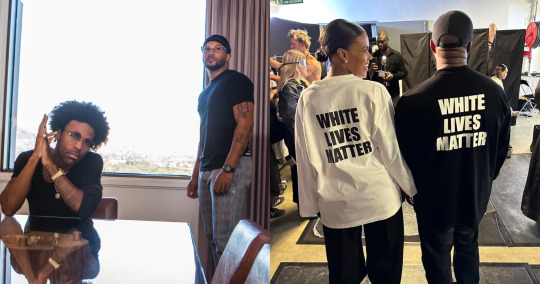
View On WordPress
0 notes
Text
Evidence shows that better training doesn't lead to better officers. It is a persistent myth and narrative that prevents real, necessary reform when it comes to policing and public safety.
#defundthepolice#defund the police#police violence#police shooting#police brutality#black lives matter#BLM#police#police reform#blacktwitter#blackexcellence#black twitter#black people twitter#arizona#civic cipher#republicans#ron desantis#dei#democrats#trump#Biden
222 notes
·
View notes
Text
İki Siyah Adamın Kendi Ticari Markası – Rolling Stone
İki Siyah Adamın Kendi Ticari Markası – Rolling Stone
“Beyaz Hayat Önemlidir” iki Siyah adam tarafından ticari markadır. ile bir röportajda Sermaye Bev sahibi Civic Cipher – Arizona merkezli ırksal adalete odaklanan radyo programı – birkaç gün önce Kanye West’in yeni bir Yeezy hattında kullanmaya çalıştığı ifadenin ticari markasına sahip olduklarını açıkladı.
Quinton Ward ile birlikte Civic Cipher’ın sunucularından Ramses Ja, “Yasanın işleyiş şekli…
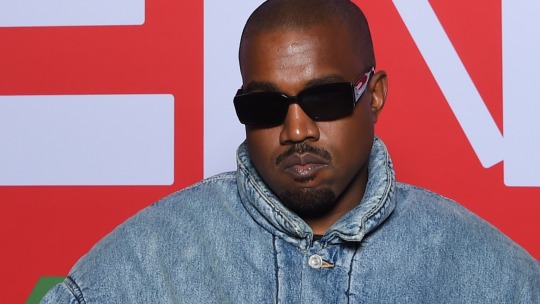
View On WordPress
0 notes
Note
You are your top 5 Shadow agents

I don’t talk about the Agents as much as I should, even though I constantly try to stress their importance, because I’m working on essays for them individually. To be honest, I think about the Agents practically every day to the point I have a hard time separating my headcanons from the actual canon material, but I have to stay true to it, and the lack of material regarding them means that the only way I can truly talk about their characterization is by diving deep into the novels and taking notes, which I don’t have much time to do, and then finding the right books or moments to talk about, which is even more difficult.
This by no means constitutes my big thinkpiece on them, but it’s a start, and ultimately narrowing it down was a lot harder than I expected. This order is by no means final, if you asked me this question next week or next month I’d probably have a different answer, but it’s the 5 that I find myself thinking on the most.
Honorable mentions: Jericho Druke and Myra Reldon, who are incredibly awesome characters conceptually and who have great moments each, and whom I definitely think deserve big turns on the spotlight if the Agents ever get put on the spotlight again, but are held back by issues with their presentation and lack of prominence. Margo Lane, whom only just narrowly missed the cut because, as much as I like her and think she gets an underseved bad rep and definitely has great things going for her, I sadly have to concede isn’t as consistently great or well-written as she should be. Clyde Burke, whom I definitely like a lot based on what I’ve read and consider an integral part of the line-up, but haven’t read enough of the novels he’s in to really solidify him as one of my favorites just yet. And Slade Farrow, who is a bit too complicated to talk about superficially.
Allright, so here they are
Number 5: Burbank

As the center of all communications within The Shadow’s network and the only character in the series who is even more mysterious and elusive than The Shadow himself, Burbank is fascinating and the kind of character who simultaneously seems to be both begging for an in-depth exploration and yet who also should be dead last on the list of mysteries about the series we want spoiled, because nobody wants the mystery ruined. He’s a bit of cipher personality-wise compared to the other agents, but he kind of has to be, and I think it helps to illustrate the many forms the agents of The Shadow can and should take, that one of them is this total mystery whom we know nothing about and yet is so vital to the whole thing. And it’s interesting also because, for all the many variations we’ve had on The Shadow’s life and thoughts and feelings and etc over the years, Burbank has stayed more or less the same. Whatever variations he’s had in design aside, Burbank just is.
The pulps did often have moments where we would get to see moments that told us a little more about Burbank, gestures he did, capabilities he had and didn’t have, little details Gibson would sprinkle in to keep people fascinated. Several scenes with Burbank are almost presented like you’re watching a movie, in the way Gibson keeps describing his face being mysteriously blocked from view by objects or lighting, like not even in your mind you are supposed to know what he is. And it’s all the more fascinating because, unlike The Shadow, as far as we know, Burbank is just some guy who’s good with tech, who was only recruited in the 2nd story but apparently knows The Shadow from before it, and whom The Shadow entrusted with virtually every secret necessary to keep his operations running.
It’s kind of a sign as to how utterly neglected the agents are that, to this day, few writers who’ve ever touched The Shadow has ever come close to giving us any sort of explanation or backstory or anything on Burbank, and I refuse to believe these people had that much self-control. Of course I have my own ideas for Burbank, but even I would hesitate to put them on a story, because Burbank epitomizes that double-edged sword that comes with a solid narrative mystery. Burbank just is, and hopefully he will stay that way.
Number 4: Dr Roy Tam
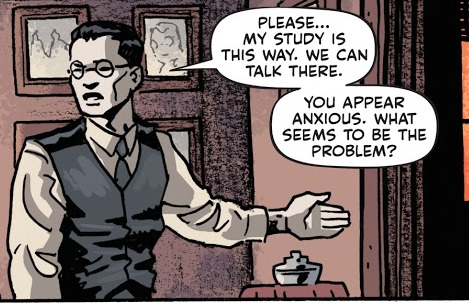
Mention of Dr. Tam meant much to Sayre. He was acquainted with Roy Tam, the Chinese physician. He knew that Tam was a power in Chinatown; one who worked for good
Unrolling a map, Tam showed the entire Manhattan area, studded with tiny dots in districts quite remote from Chinatown.
"These represent my outposts," he said soberly. "They are places, owned by Chinese - restaurants, laundries, curio shops, other places of business. In each of these places, I have a friend."
The Shadow understood. Dr. Tam was the motivating factor among the Chinese who adapted themselves to American ways. His mission was to create good will among races, to put an end to prejudice and superstition.
A newer and more sober spirit had replaced the old and dangerous festivities. Feuds in Chinatown were a thing of the forgotten past. Dr. Tam and his associates had done much to bring about the present sentiment; but there were persons - even among that group - who felt regret at the passing of old traditions.
Dr Tam is a remarkably layered character for one that only appears in about ten stories, and he’s one of the agents I’m most eager to discuss in-depth. He’s another one of those agents that Gibson introduced by tricking you into seeing him as a villain, as a Yellow Peril cliche, until he is revealed to be in fact a good man. Not just good, Roy Tam is presented as a powerful, influential and cunning Chinese man with a lot of assistants secretly working for him, and who is consistently presented as a progressive, pacifistic, benevolent civic leader and ally, even friend, of The Shadow.
Tam is very much westernized and the stories paint that mostly as a good thing, and this is one of the areas that I think could very much result in an interesting story that looks at the ramifications of his role, because of course not everyone is going to agree with his viewpoints, of course him being an advocate against superstition and tradition isn’t necessarily a good thing (and it’s not how Yat Soon, The Shadow’s other major Chinese ally, works, which puts the two at odds), and of course it’s a complicated situation, but the fact that Tam invites this kind of debate at all I think is something very interesting
Largely because of the movie, Dr Tam is one of the few agents of The Shadow who’s managed to sustain appearences in modern stories, and none of them have ever really went with his original angle as a powerful civic leader. Instead he’s been largely painted as either a scientist, like in the movie, a general practitioner, and a psychiatrist, and his age has been all over the board.
I prefer him in his original form but I also very much like the idea of Roy Tam being, like the Chinese supervillains he was created to be a subversion of, an incredible genius who’s got skills in all fields that can fit under the “Dr” part of his job and is also an incredibly capable leader able to unify splintered communities under a cause of unity and cooperation, someone who absolutely could be the adventuring genius so many other pulp heroes are, except he dedicates himself wholesale to his community and the fight against prejudice and the betterment of lives, even if he’s misguided or wrong at some of the causes he takes up. I really think this character could partake in really great stories if ever brought back.
Number 3: Cliff Marsland

(Fan-art by @cryptixcreations)
Cliff may have actually been the first agent I really fell in love with based on concept alone, even before I read the stories he was a part of and started loving all of the others. He’s one of the few agents who has prior history with The Shadow and we get ever so tantalizing hints at his background that we ultimately never get to learn about in full. He’s the resident tough guy and underworld contact of The Shadow, which in any other series might have made him the biggest badass and a loner action hero who’s too cool for things like thinking and relying on others for help. But here, trying to be that only gets Cliff into trouble, and circumstances gradually morph him into the series equivalent of a Team Dad.
He was one of the agents who we got to see develop as a character. As he appears more frequently past his introduction, he grows from a headstrong, careless jackass, mostly interested in the action parts of the job, who “resigned himself to an adventurous career with violent death as its inevitable termination”, into one of the most reliable and capable agents, taking the lead during action scenes but otherwise fully defering leadership to Harry, and being the agent most likely to partake in gunfights and rescue The Shadow out of trouble, joining in missions like infiltrating circuses or high-society clubs and forming very strong friendships with Harry, Clyde & Hawkeye, who almost kills a man with his bare hands when he thinks Harry’s been killed. He’s the hardass, square-jawed ex-con who plays the reputation of a brutal killer, and is in reality a great friend, ally and husband (Arline has sadly only been mentioned in three stories), on top of being an invaluable fighter and secret agent.
Cliff could have easily been the protagonist of a long-running series all his own and that’s one of my favorite aspects of The Shadow’s agents. They are people with agency, goals and dreams and relationships and lives beyond the roles they play, they all have strengths and weaknesses and faults and positives that bring them much closer to us than The Shadow could ever be, with no end to the variety of roles they can take, and Cliff in particular is a character I’m very attached to.
I do hope that he eventually found peace in a quiet life with Arline once his business with The Shadow was over.
Number 2: Harry Vincent
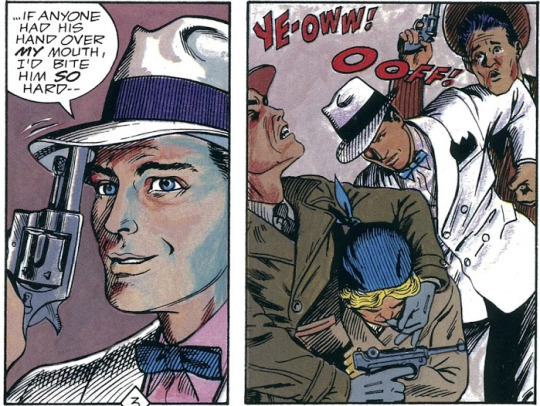
The Shadow as a franchise has been vastly worse off as a result of Harry Vincent being completely sidelined and mischaracterized in virtually every adaptation since, and the sheer love that Shadow fans hold for Harry purely may be the closest thing to a true universal opinion in the fandom.
Harry is a lot of things: the audience surrogate, the protagonist of much of the early stories, the leader of the agents in field duty, the dude in distress who gets kidnapped far more than even Margo, a hopeless romantic, an action hero, the one who gets sent to recruit agents because all The Shadow has to do is send Harry on an assignment and wait for him to come back with a new friend. He is a competent, resourceful, strong, extremely kind ball of sunshine who's got the potential for greatness, even if he can't see it.
And for this post I’m going to highlight this: Harry is, on top of all that, the ultimate embodiment of what The Shadow strives to protect, help and uplift. He is the living proof that The Shadow's mission has a good, positive effect in the world, long after criminals are brought to justice and plots are failed and victims are rescued, purely by the fact that he’s alive and helping others who were once like him. Someone who, despite having so much to offer, could have easily been swept away by the world’s callousness and cruelty, if The Shadow wasn’t there to rescue him and uplift him.
I liked The Shadow pretty much at first sight after seeing the character’s design and listening to episodes of the radio show, and my appreciation for the character grew after reading The Shadow’s Shadow, but it wasn’t until I encountered @oldschoolcrimefighters and her brilliantly informative writings on The Shadow and Harry that I not only fell in love with the series, but decided to do everything in my power to try and get other people to love it too and see the potential it has. I think a lot more people should at least be aware of why Harry matters.
Number 1: Moe Shrevnitz

I was honestly a bit surprised when I rounded up all of the agents to make this list and Shrevy here ended up in Number One, but in hindsight, it may have been obvious all along.
My reasonings as to why Shrevy is my favorite agent do get a bit too personal, especially because of something that happened to me as I was writing this post, so I’m putting it on a separate post here.
#the shadow#pulp heroes#pulp fiction#replies tag#harry vincent#moe shrevnitz#roy tam#cliff marsland#burbank
19 notes
·
View notes
Text
I am a Faller. I am a Government student. I did only that which was my civic duty.
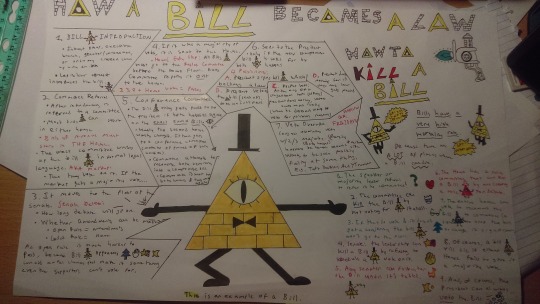
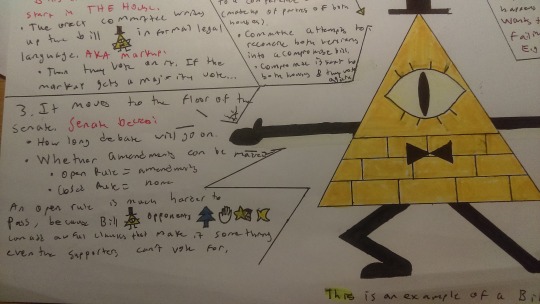
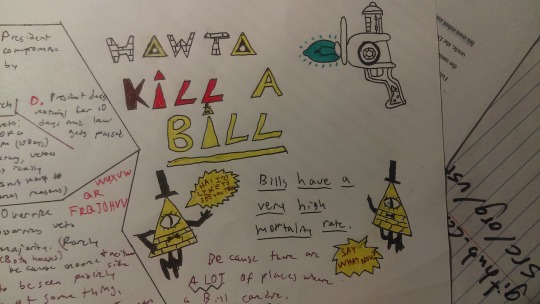
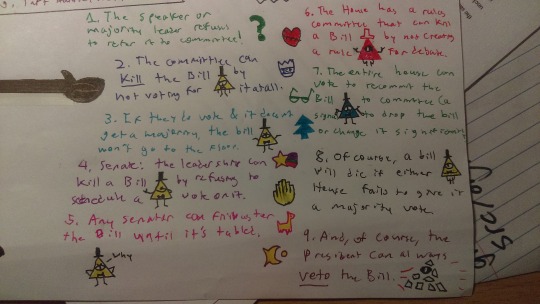
#gravity falls#bill cipher#government class#killing a bill is a lot easier than killing bill#alex hirsch#dipper pines#mabel pines#reverse falls#it was only my civic duty to my people
94 notes
·
View notes
Quote
Popular revolutions are almost unheard of in most mainstream science fiction and fantasy (well, ones that aren’t either flat out Bad, or quote Just As Bad As The Other Side are rare anyway), and that’s tragic because, even leaving aside my own political view on the subject, the emotions that bring rise to them are pretty universal, and (obviously, since participating in one is dangerous) incredibly powerful. So it’s nice to see here, in the last several episodes, the Cardassian people, who, for the entire series up to this point, have been oppressed by one group or another, being told by the character who’d once been the viewer’s cipher for all Cardassia that it’s not a Great Army led by A Great Man who’ll win the day, not a perfect king who’ll ascend to a throne and rule justly forever, but the people themselves who must act to effect change. It’s at once a radical change from the hierarchical, authoritarian, and monolithic entity we once knew as Cardassia, and oddly natural given the emphasis we’ve seen Cardassian culture places on civic and social duty over the course of the series.
Ohma’s comment on Star Trek: Deep Space Nine Rewatch: “The Dogs of War”
#revolution#ds9#deep space nine#star trek#cardassians#the dogs of war#tor#tor.com#authoritarianism#fascism#cardassia#quote#ohma
2 notes
·
View notes
Photo
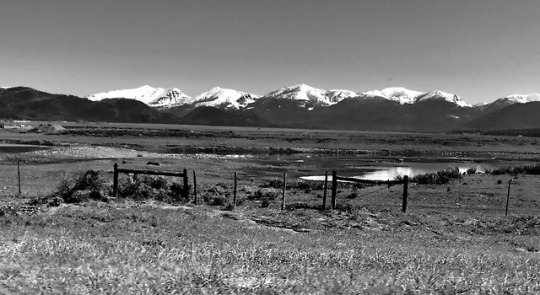
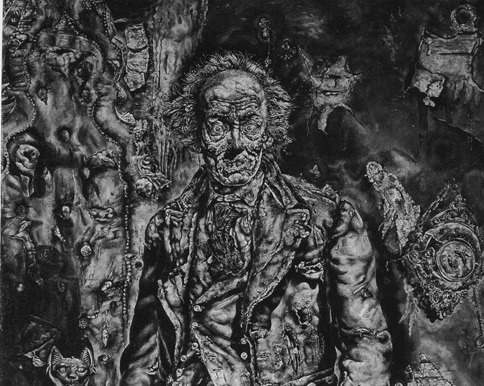


short trip home (part 2—west of the divide & back)
Two famous movies produced before Technicolor became standard, when it remained costly and labor-intensive—The Wizard of Oz (1939) and The Picture of Dorian Gray (1945)—still made strategic limited use of it: in Oz (at length) as the vivid dyes rendering Dorothy’s polychrome dreamland; in Gray as the jolt bringing us face-to-face with Dorian’s corruption and cruelty.
Audiovisual entertainments are now so immersive and realistic that it’s hard to gauge what impact the selective use of color once may have had on movie audiences familiar only with black-and-white. Yet both films’ technique came to mind as I drove from east to west over Rogers Pass—from dry, late icebound winter into full-blown mountain spring. I weighed switching to color for the second half of this post.
That would have strained an already slight parallel. But the greens of the meadows and forest floors along the Blackfoot Valley did rival the John-Deere-tractor hue of the Wicked Witch of the West’s face. And the unidentifiable roadkill emerging here and there from the ditches’ receding snows could have resembled (since it was already on my mind) Dorian’s vile portrait-corpse.

The Blackfoot Valley has less idiosyncratic ties to cinema with Robert Redford’s A River Runs Through It (1992), the movie based on the title novella of an autobiographical collection by Norman Maclean, a retired Shakespeare professor from the University of Chicago, who had grown up in Missoula. The film doesn’t come close to conveying the story’s wonder and laconic pathos, I’ve always thought. The collection, never promoted, and published by an academic press since no commercial publisher would touch it, was in my teens a dog-eared parable passed around among fly-fishing family and friends, who took it to heart before it grew widely famous (although my paternal grandfather, an ardent fly-fisherman and churchgoer, like the author’s father, found it scandalous).
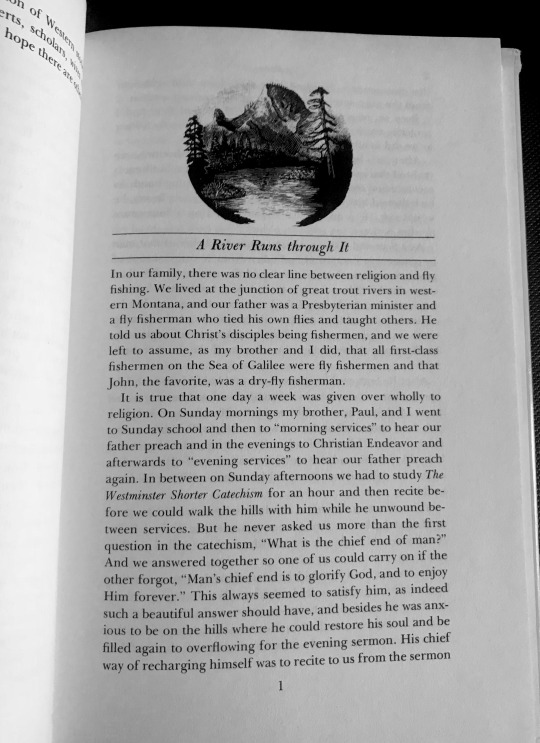
The Big Blackfoot River comprises the healing waters that course through the story, though other streams make appearances too. The Blackfoot is “multitudinous,” “gossamer,” “electrically charged,” and above all “beautiful”: a bestower of glory and haloes; a shadow-maze, an oracle, a cipher. It’s the timeless current that recalls for Maclean his brother, Paul, and helps him come to terms, imperfectly, with Paul’s bewildering character and at last his murder.

The North Fork of the Blackfoot River (web photo)
In July and August, the Blackfoot pours like molten crystal through long, at times suddenly sharp, curves, tinged emerald in its channels and holes. But in mid-May this year it raged down in such muddy volume that its rapids’ usual din fell to a whisper—an unnerving sign of power and mass—and it flooded flatter parts of the valley floor in shining swaths. I wondered how the fabled trout within it were surviving such forces.
At various points, Highway 200 and the river diverge, to cross again miles further down. At each successive crossing that day its torrent seemed doubled. Near the sawmill and railroad town of Bonner, where the Blackfoot joins with the Clark Fork River, it ran as wild and full as I could have imagined possible for the river I had known since childhood.
A few miles yet further down, in Missoula, the Clark Fork surged too. As its banks bloomed obliviously with lilac and chokecherry, the river smashed through town at 100-year flood levels, completely drowning Brennan’s Wave, the white-water hydraulic there beloved of kaykers and river surfers. Norman Maclean’s Blackfoot had here become T.S. Eliot’s strong brown god —“sullen, untamed, and intractable.”

The Clark Fork River in Missoula May 2018
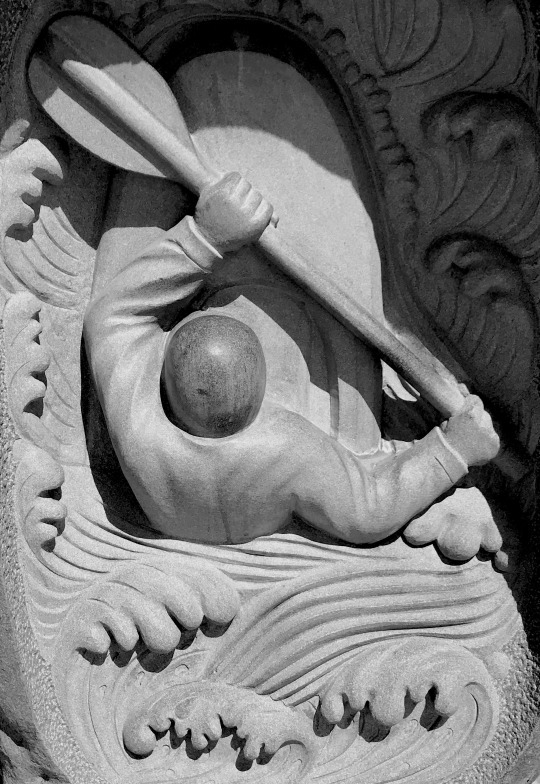
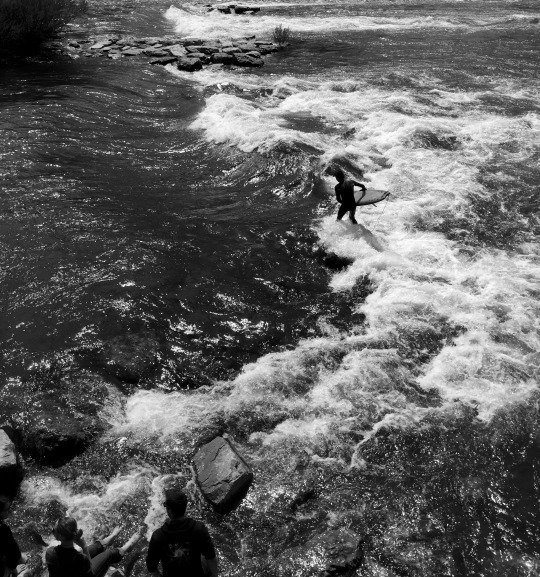
Brennan’s Wave in May a few years ago
Most of the city itself hadn’t flooded, though, and bustled with the business of graduation, taking note of the Clark Fork’s maelstrom from its bridges but preoccupied with its own rhythms and rituals.
Indeed nearly all weekend the weather and setting were paradisal. The crabapples’ white profusion disappeared here and there into the snows of the Missoula Valley’s five surrounding mountain ranges. Lawns and trees pulsed green in long spring light. There were parties for the graduates and their families, smiles and toasts and a palpable sense of relief. The student house where my nephew lived stood just a block west of the campus, a neighborhood that includes beautiful yards and small mansions of various architectural inspiration.



Charles C. Brothers Residence under restoration
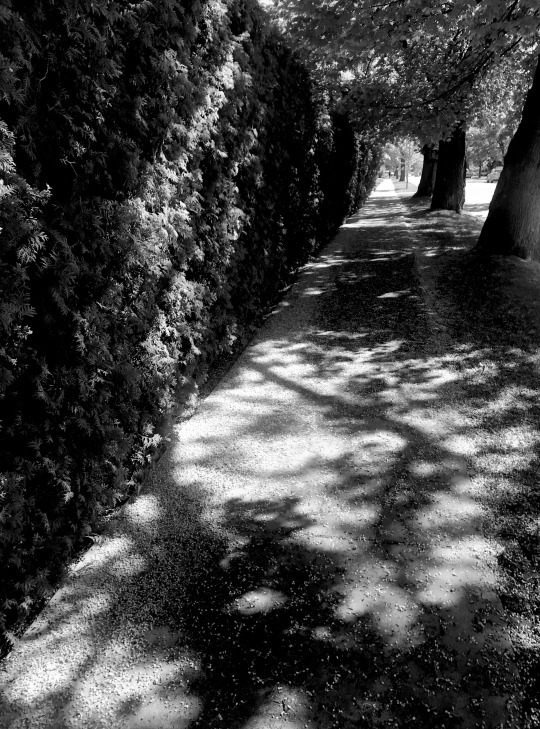
Missoula embraces its identity as a political and civic oasis in a deep red state, still retaining some air of the working-class progressivism forged through its early ties to the railroads, timber industry, and Forest Service. The university, of course, has long reinforced this culture on its own terms, as do Patagonia-wearing millionaires who’ve moved there for close access to wilderness. The city itself has bucked the regressive zoning and land-use trends elsewhere in Montana to restrict sprawl and keep the bare foothills cradling it mostly development-free. Those foothills constantly draw the gaze upward and shift with clouds and light; from the busy center of town their emptiness somehow calms the heart.
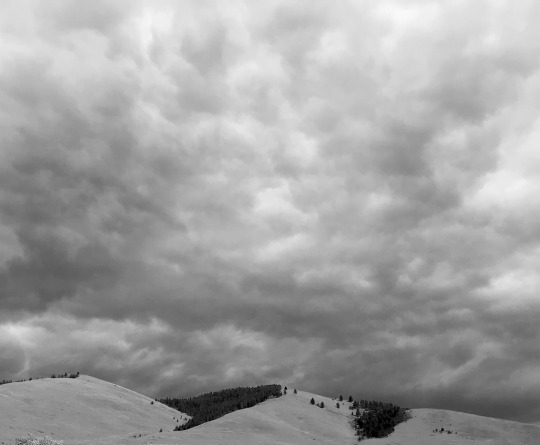

Alley art downtown

Alchemy along the walls at Butterfly Herbs

In Missoula, on the south bank of the Clark Fork
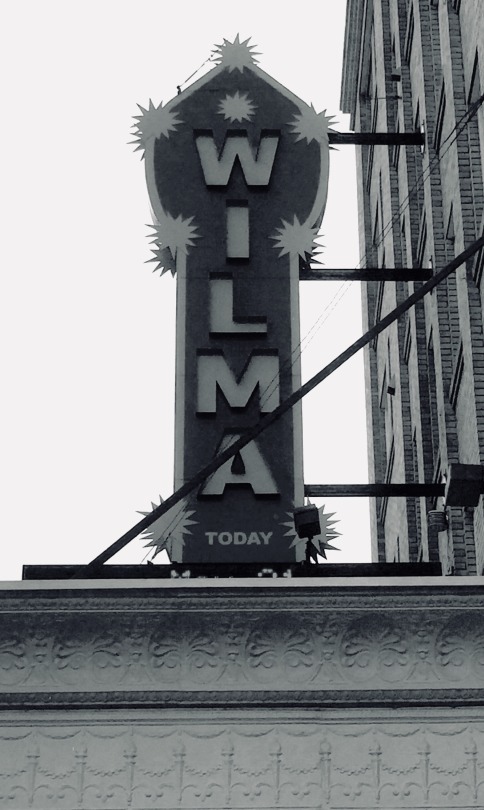
Missoula cherishes its oddities, too, human and otherwise—probably none moreso than the dramatis personae haunting the Smead-Simons building, Montana’s first skyscraper, known as the Wilma. Standing tall on the downtown-side bank of the Clark Fork, the building’s early history (available in various accounts) revolves mainly around its opulent movie theater and the Crystal Plunge, an indoor Olympic-size pool (another Montana first). Through the years chapters featuring a perfumed fountain, Mahalia Jackson, ornithomania, and David Lynch were added. Its apotheosis was the Chapel of the Dove, a shrine assembled in its basement to venerate Korro Hatto, the beloved pet pigeon of longtime Wilma owner Eddie Sharp.
Though openly gay (when being so in the American West carried serious risk) and half her age, Sharp had married Edna Simons (née Wilma), the widow of the the Wilma’s founding owner and a former Vaudeville singer. Sharp revered and dearly loved her. According to Missoulians I know, but no written account I could find, Sharp came recognize Korro Hatto as Edna Simons-Sharp’s reincarnation at some point after her death in 1954; the chapel was an exact replica of chapel where they had married four years earlier in New York City. Korro Hatto, Sharp’s constant shoulder-perching companion, lived to the age of twenty, and they are interred together, along with Sharp’s subsequent partner of forty years, Robert Sias, in Missoula City Cemetery.

Missoula is now home to several start-up breweries and distilleries, but still hosts a number of its original taverns, most notable (to me, anyway), the Oxford—”the Ox”—whose blackjack tables never close and which used to serve brains and eggs as part of its 24-hour breakfast menu. The poet Richard Hugo, perhaps besides Maclean the most famous literary figure who lived and taught in Missoula, drank and socialized here and in the town’s numerous other “cavelike, majestically slow-moving Western barrooms.”
Stars are not in reach. We touch each other
by forgetting stars in taverns, and we know
the next man when we overhear his grief. Call the heavens
cancerous for laughs, and pterodactyls clown
deep in that fragmented blue. In that red heart
a world is beating counter to the world.
Soon enough, It was time to drive back, to cross the Divide again in my rental car (which my youngest nephews, twins, relentlessly deemed “gutless”)—this time from west to east. The flight home to Minnesota would depart the next morning at a harsh pre-dawn hour.

After goodbyes, we headed out in a caravan. I did so with a heavy heart—the weekend had been too short, the family time joyous but jumbled, the fragrant sliver of springtime achingly perfect.
The road from Missoula to Great Falls is still beautiful, though the views eventually resolve, once over Rogers Pass, into the forlornness of eastern Montana. The late afternoon sun, falling behind us, kept out of our eyes and lit the shifting landscapes ahead. The Blackfork River dwindled as we climbed, at first only slightly, but by Lincoln decidedly. The snows on pass had mostly melted away.
We sped through Lewis and Clark and Cascade counties, past ranches and windbreaks and homemade antigovernment signs nailed to fenceposts, anxious for our destination. At Vaughn, though, rather than taking the interstate where it crosses highway 200, we cut off on the road leading to First People’s Buffalo Jump State Park, or the Ulm pishkun as it’s locally known. The twilit hills and coulees glowed pink and gold. We stopped and got out of the car at the turnoff to McIver Road just to take in the sunset for a few minutes, then got back in and drove the rest of the way to my brother’s house before dark.

#montana#norman maclean#eastern montana#missoula#lewis and clark#brennans wave#A River Runs Through It#first peoples buffalo jump#richard hugo#charles c brothers residence#the wizard of oz#dorian gray
10 notes
·
View notes
Text
PHL / Where Are You Now / Kemar Wynter
Back to exhibition info
I was born in Brooklyn, New York on June 23rd, 1995 at Saint Mary's Hospital, in the area historically known as Weeksville. Crown Heights raised me during a time when the neighborhood was replete with immigrants from the Caribbean. Bakers, dressmakers, home health aids–like my mother–filled the apartment buildings that ran along Utica Avenue's abundant cross-streets, all in hopes to attain better lives and opportunities for their youths.
Coming from an extended family–three aunts, and innumerable cousins were invaluable to an only child like myself–and growing up in a community woven together through a collective pursuit for success raised me to see civic engagement as a mandate integral to the strength of the neighborhood. Everyone, everywhere, deserves nice things, and to strive for that start at home, both private and communal.
Growing up, Friday nights were a time of revelry and relaxation. It was tradition for the whole family to come over to my Aunt Delores' house for dinner, a chance to unwind after an arduous work week. My cousin Chantal and I would come home from school in the early afternoon and immediately find ourselves caught amidst a dervish of flavors as the scent of my auntie's par-cooked dishes would emanate into the entryway.
After getting changed, Chantal and I would join Auntie Del in the kitchen, stirring cream sauces for macaroni pie, forming ground beef golfballs for burgers, grating carrots, and opening bottles of Guinness for carrot cake. As I grew older, my role in the kitchen grew in turn, from minute pinches of seasoning to simmering split pea soup, to building jerk marinades for freshly slaughtered chickens, to serving pork roulades with cream cheese and sundried tomatoes. Now that my extended family has moved beyond New York, I fondly recall those early Friday night dinners and my relatives' faces as they dined on my cooking pridefully. Those moments made clear the value of one's hands and the impactfulness of a meal made with loving intention.
My practice at its core is generated from my passion for cookery. Growing up without the Patois of my ancestors, I came to see the kitchen, enlivened with the percussive rattle of pot covers over a rolling boil, the cry of marinated meats as they meet hot oil, and the moist heat of which notes of ginger and allspice and burnt sugar are held aloft, as the tether to my Jamaican heritage. As a child of the five boroughs, I learned to love the velveteen richness of a fresh knish with mustard, the enrapturing scorch of a bird's eye chili in minced pork and the titillating glacial crisp of peppermint and dark chocolate as much as I do the euphoric richness of cow foot soup and spinners.
My paintings are made in homage to the bevy of cuisines that I have had the privilege to encounter. My color is flavor, my color is texture and my color is heat. Built up carefully in layers and whorls of oil pastel, and given structure through ciphers, stripped down flags and location markers, the works are reflections on the experience of partaking in these delicacies and responses to the hybridity that comes with being a member of the Jamaican diaspora. Through my practice, I'm building a visual Patois, a body of work and record through which I can triangulate myself between the Caribbean, New York and the innumerable cultures and cuisines yet encountered.

Brown Sugar Cinnamon Poptarts, oil bar, oil pastel, charcoal and graphite on Holbein 33, 21" x 16", 2021
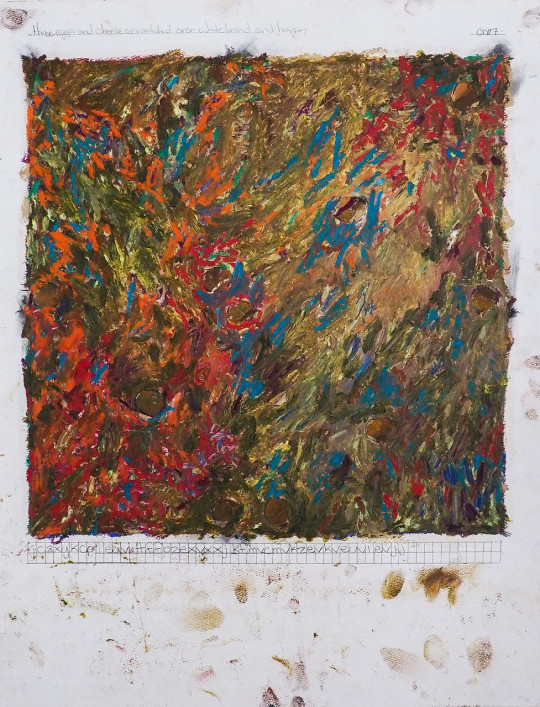
Three Eggs and Cheese Scrambled over White Bread and Hoisin, oil bar, oil pastel, charcoal and graphite on Holbein 33, 21" x 16", 2021

Chilaquiles, oil bar, oil pastel, charcoal and graphite on Holbein 33, 21" x 16", 2021
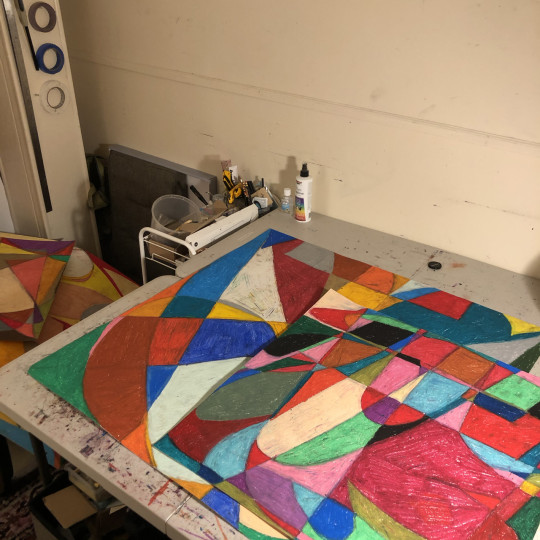
current workspace images
I've been working from home since I graduated from college back in 2017 so things haven't changed much in that regard. If there is any dramatic difference it would be sharing the "studio" with my partner maya. They work during the daytime and with zoom meetings being such a constant in their line of work, my practice has begun to creep deeper and deeper into the early mornings to avoid disturbing theirs. I'll usually walk into the studio around 7-8 pm and aim to leave around 3-4 am, but sometimes if the work is percolating just right, I'll open the door to the smack of blinding daylight, around 8-9 am, right as maya begins to wake up for their day.
0 notes